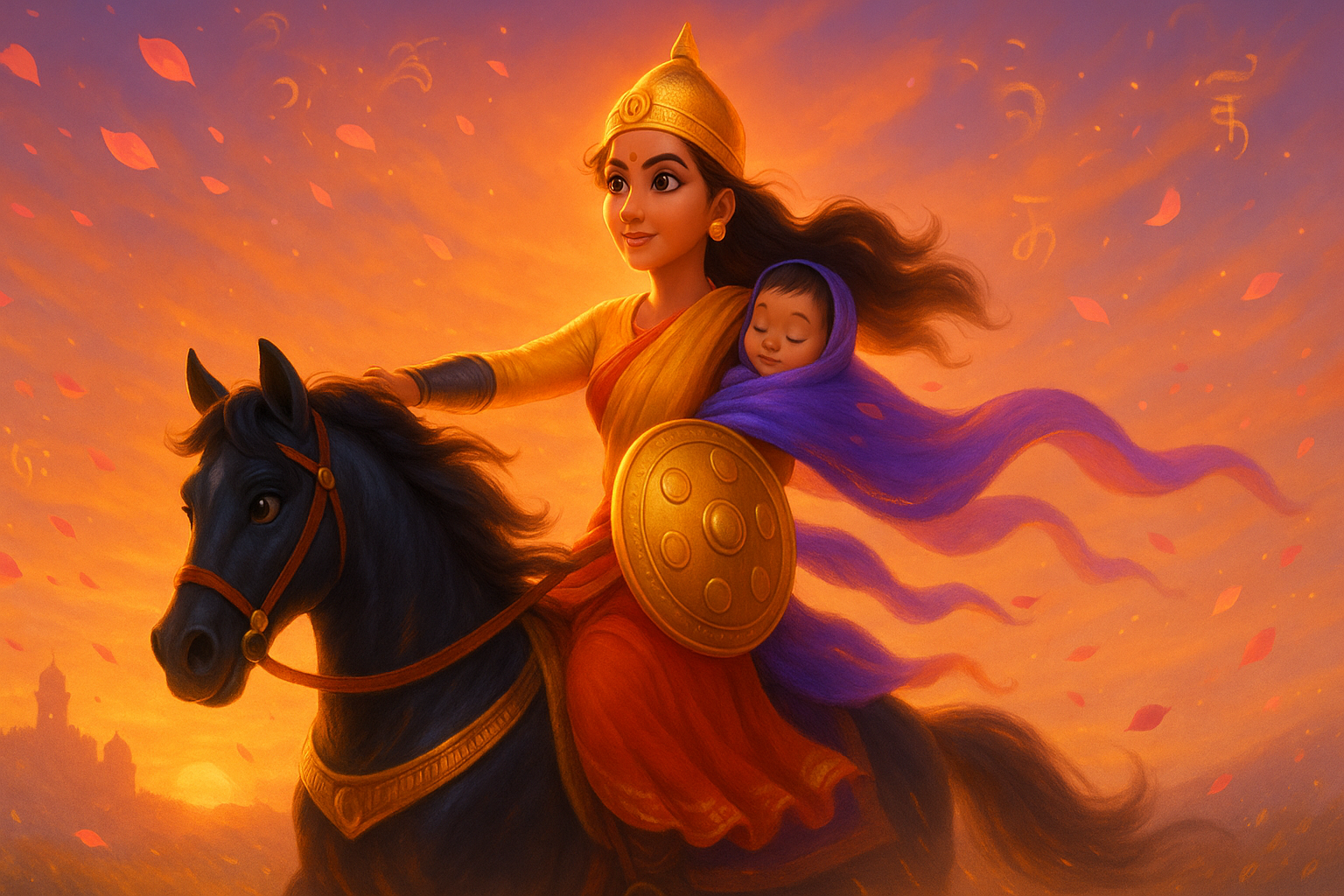In 1828, in the holy city of Varanasi, a girl was born who would one day shake an empire. Her name was Manikarnika Tambe, but her family called her affectionately, Manu.
Her father, Moropant Tambe, worked for the Peshwa of Bithoor, and little Manu grew up amidst horses, scriptures, and swords.
While other girls played with dolls, she learned fencing, shooting, and riding — often galloping through the palace grounds astride her horse.
❝ Main apni Jhansi nahi doongi.❞ — ❝ I shall not surrender my Jhansi.❞
Becoming the Queen
At sixteen, Manu was married to Maharaja Gangadhar Rao, the ruler of Jhansi — a small princely state in northern India. She became Rani Lakshmi Bai, the name that would echo through time.
Their marriage was affectionate, but brief. The couple’s infant son died soon after birth, and the Maharaja, heartbroken, adopted a young boy, naming him Damodar Rao as heir.
But when the Maharaja died in 1853, the British East India Company invoked the Doctrine of Lapse — refusing to recognize the adopted child and annexing Jhansi.
The young widow was told to vacate her palace.
The Defiance
They expected her to grieve silently. Instead, she armed herself.
Lakshmi Bai refused to yield. She took charge of Jhansi’s army, trained her people, and fortified the city. The queen who once ruled with grace now ruled with steel.
❝ Khoob ladi mardani, woh toh Jhansi wali Rani thi.❞
When the Revolt of 1857 erupted, Jhansi became a symbol of resistance. The Rani led from the front — her sari tucked in her belt, a sword in each hand, her son tied to her back as she charged into battle.
She was not just a queen defending her land; she was a mother defending her child, and a nation unborn.
The Battle for Jhansi
In March 1858, British forces under General Hugh Rose besieged Jhansi. Against impossible odds, Lakshmi Bai held them off for two weeks. When the walls finally fell, she escaped on horseback under the cover of night — her legend galloping with her.
She regrouped in Gwalior, joining forces with other revolutionaries. The fight was no longer for a throne — it was for India.
❝ If defeated and killed on the field of battle, we shall surely earn eternal glory and salvation.❞
The Last Ride
On June 18, 1858, at Kotah-ki-Serai near Gwalior, Rani Lakshmi Bai met her final battle.
Surrounded, wounded, and outnumbered, she fought till her last breath. Witnesses said she looked like Durga herself — unyielding, radiant, divine.
She fell, but did not surrender. Her body was burned swiftly by loyal soldiers, so the British would not touch her.
❝ She was the bravest and best of all Indian leaders,❞ wrote General Hugh Rose, her enemy, in awe.
The Immortal Flame
The Rani of Jhansi was only 29 years old when she died — but her death became her immortality.
She became the heartbeat of India’s freedom movement — a symbol of courage, dignity, and defiance. Poets sang of her valor.
Generations drew strength from her name. And in every woman who refused injustice, her spirit lived on.
❝ Bundele Harbolo ke mukh, humne suni kahani thi, khoob ladi mardani, woh toh Jhansi wali Rani thi.❞
❝ From the lips of Bundelkhand’s bards we heard her story — she fought with valor, she was the Queen of Jhansi.❞
